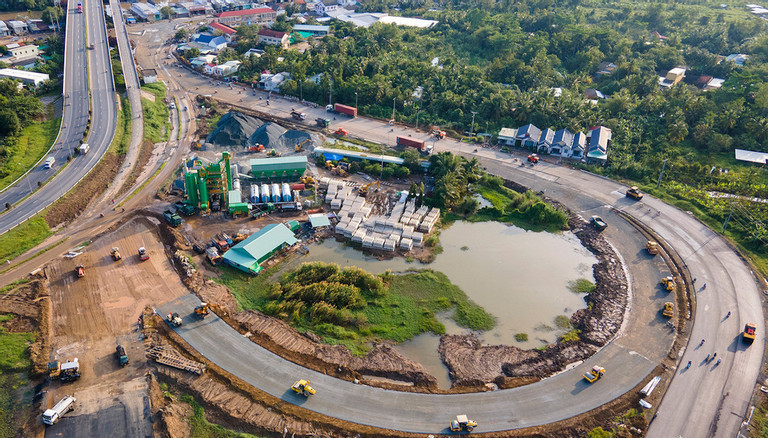
But Mekong Delta residents working far from home no longer had to experience a long journey to return to their hometowns during this Tet. Twenty million people in the southwest region were able to use new highways.
The My Thuan – Can Tho Expressway and My Thuan 2 Bridge have opened to traffic, allowing travel from the Mekong Delta to HCM City to be shortened to two hours. The western highway extends from HCM City to Can Tho which eases traffic overloading on major transport routes in the region.
My Thuan 2 Bridge was built by Vietnamese engineers and workers with domestic capital sources, capitalized at VND5 trillion. My Thuan 1 Bridge was designed and built with foreign capital and implemented by foreign contractors.
Completion is expected soon for Can Tho 2 Bridge and Can Tho – Ca Mau highway that links HCM City and Ca Mau.
These are part of the plan to build 463 kilometers of highways by 2026 with total investment capital of VND94.4 trillion.
The biggest obstacle for project implementation is the lack of materials. The ground filling work alone in 2024 needs 48 million cubic meters of sand to backfill the road-bed of highways Can Tho – Ca Mau, Cao Lanh – An Huu, My An – Cao Lanh, Chau Doc –Can Tho – Soc Trang.
Local authorities, after surveying sand mines in the localities, estimate that the maximum capacity is 18.5 million cubic meters, and they can prepare only 5.7 million cubic meters. The materials won’t be provided in large quantities at once, but will be given in different phases.
Though the government allows a special mechanism to shorten the time needed to open or close sand mines, local authorities said the procedures take a lot of time.
The Ministry of Transport (MOT) will work with investors, project management units and relevant contractors to settle the obstacles.
In the immediate time, projects under construction need materials to ensure uninterrupted execution. And localities in the same region need to share sand mines with each other.
Experts suggested that contractors use sea sand for projects, after the Vietnam Geology Department confirmed that it meets the requirements as a highway leveling material. There is a sea sand source with reserves of 680 million cubic meters, and an area of 250 square kilometers in Soc Trang province, 20 kilometers offshore and at a depth of 3-9 meters under water.
Under the road development plan to 2030, there will be six more highways in the Mekong Delta with the total length of 1,166 kilometers, 4-6 lanes, expected to receive investment from 2026.
The state and local budgets won’t be enough to develop the infrastructure items, and mobilizing capital from different sources is the best solution. Experts say that it is necessary to "awake" all capital sources for transport network development.
Experts have suggested allowing investors to build and operate highways to collect tolls, and issue special bonds under which the bond buyer will not have to pay income tax on interest from bonds.
Most recently, a project on waterway corridors and logistics in the southern region was signed. The project will link rivers and canals of eight cities and provinces in the south, including HCM City, Can Tho, Vinh Long, Ben Tre, Tien Giang, Long An, Dong Nai and Ba Ria – Vung Tau. Once it is completed, there will be two inland waterway transport corridors.
The East-West corridor has the total length of 200 kilometers, while the North-South has 82 kilometers. The corridors, once completed, will ensure traffic capacity for large ships and container ships transporting goods. They will also serve as new growth poles, maximizing the advantages of expressways.
Tran Van Tuong